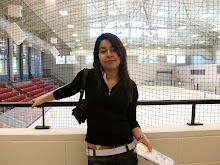1. Social dominance. Whose social group is more dominant?
As we are in U.S.A the dominant group here is English native speakers, but on the other hand there is big group of Spanish native speaker, like mexican people that is not a minor group, the thing is that the Spanish speakers have to adapt to English not on the other way...
2. Integration pattern. How much do learners integrate, or do they do most things apart from the mainstream?
The learner can integrate to the Spanish culture here, because as I said before is not a minor group so they (Spanish group) do some events or places to get closer to each other and their culture, depens on the kind of learner and the motivation that she might have to attend o get closer to the Spanish culture.
3. Enclosure. To what extent does learner's group have their own resources for interaction, such as church, publications, club?
Gina has a lot of places to interact to Spanish people but her main resource is us (the chilean group).
4. Size. How large is the group?
Gina is not affected about this point since she is in the bigger group (English speakers).
5. Cohesiveness. How much does the group "stick together"?
Gina does not belong to a group of learners.
6. Cultural congruence. How are the cultural patterns and customs of the home culture and the target culture alike or different?
Both culture are very different but in a way they do really well together in terms that they need each other and also because U.S.A is now a country who mixes a lot of different cultures not only the Spanish.
7. Attitude. What attitudes do the home and target cultural groups have toward one another?
I believe that Gina has a very positive attitude toward the Spanish culture since she wants to learn the language.
8. Intended length of residence. How long does the learner intend to stay in the new country?
Gina lives in the U.S.
Psychological Distance
1. Motivation. Does the learner want to learn the new language?
Gina is very motivated to learn Spanish and she asked us to help her to reach that goal.
2. Attitude. How does the learner fell toward the target-culture group?
Since we are the target-culture for her I believe that she seems to be very comfortable surrounded by Spanish speakers.
3. Culture shock. Is the learner suffering culture shock?
There is no culture shock for Gina because she is going to learn Spanish in her country.










